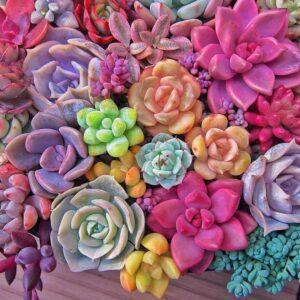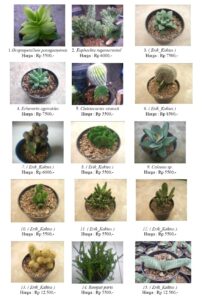Cacti are often revered for their hardy nature and unique morphology, transporting observers into a realm where resilience meets beauty. Amongst the vast array of cactus species, those adorned with red flowers particularly elicit fascination. The striking contrast of these vivid blooms against the stark, arid backdrop is nothing short of captivating. This article delves into various beautiful cactus varieties that produce dazzling red flowers, exploring the allure of these botanical wonders.
Reasons for Our Fascination with Cacti
Though cacti are often perceived as mere relics of arid landscapes, their appeal runs much deeper. The intricate adaptations of these plants have allowed them to thrive in inhospitable environments, an attribute that naturally piques human curiosity. Their physical characteristics—think spines, sculptural forms, and, most intriguingly, their occasional resplendent flowers—serve to draw in enthusiasts and casual observers alike. Each flower’s ephemeral beauty stands in stark contrast to the otherwise stolid nature of the plant, symbolizing a juxtaposition between resilience and fragility.
The vibrant blooms often emerge during specific seasonal conditions, lending the plant a certain coveted rarity. As viewers, we are inexplicably drawn to these unique traits, prompting deeper questions about life’s ability to thrive against the odds. The blossoms are not just visual spectacles; they hint at complex ecological relationships and the various roles these organisms play in their ecosystems. Therefore, understanding cacti that bloom with red flowers invites us to appreciate not just their beauty, but their ecological significance as well.
Noteworthy Cactus Varieties with Red Flowers
Among cacti, a few prominent species stand out due to their exceptional red flowers. These striking blooms often emerge to attract pollinators or signal the advent of spring. Below are several prominent varieties that are sure to ignite interest.
The Echinopsis Genus: A Stellar Selection
Renowned for stunning nocturnal blooms, species within the Echinopsis genus frequently produce brilliant red-petaled flowers. These cacti, often referred to as “Hedgehog Cactus,” come in various shapes and sizes, with some reaching up to two feet in height. The Echinopsis oxygona, for instance, showcases a spectacular transformation during bloom, as its spherical form erupts into a profusion of bright red flowers that can be several inches in diameter. Such blooms evoke gasps of admiration from landscaping aficionados and casual gardeners alike.
The advantage of the Echinopsis is not merely aesthetic; these cacti are generally low-maintenance. They thrive best in well-draining soil and require infrequent watering, making them an exceptional choice for beginners. Their vibrant blossoms often last only a day, yet the spectacle is unmatched, ensuring that devoted gardeners are rewarded for their patience in cultivating these exquisite plants.
Gymnocalycium: The Miniature Marvels
The Gymnocalycium genus embodies a delightful array of small cacti, many of which boast red flowers. Known affectionately as Moon Cacti, the Gymnocalycium mihanovichii often undergoes grafting, resulting in a colorful display atop a green cactus stock. The top of these grafted plants usually showcases bright red flowers, deepening in richness as they mature. The charms of Gymnocalycium not only include its flower’s vivid hues but also the peculiar textures and ridges of its floral forms.
These diminutive cacti flourish in pots and are ideal for indoor gardening. They thrive under bright, indirect sunlight and enjoy a well-draining mix. The blooming occurs primarily during the warmer months, and their compact nature allows them to fit snugly in any arid-themed décor.
Hibotan: The Exotic Hybrid
One of the more exotic and sought-after varieties is the Hibotan, a hybrid that often incorporates the Gymnocalycium and various Echinopsis species. These hybrids are celebrated for their intense coloration, with some cultivars showcasing striking red, orange, and even magenta flowers during their blooming cycles. Each flower tends to bloom consecutively, extending the floral display over several days, creating a continuous spectacle that can transform an entire garden space.
The Hibotan’s vibrant flowers arise from the plant’s adaptation to various environments. They symbolize innovation in cultivating cacti, marrying unique attributes of different species. This hybrid variety not only dazzles the eye but also serves as a testament to the gardener’s creativity in cross-pollinating different species in pursuit of new forms and colors.
Ecological Context and Pollination Strategies
The allure of red flowers among cacti is not merely ornamental; these blooms play crucial roles within their ecosystems. Many species attract specific pollinators, including bees, butterflies, and even hummingbirds. The bright red hue serves as a beacon, guiding these creatures to the petals laden with nectar. This attraction is essential for ensuring genetic diversity through cross-pollination.
Additionally, cacti with red flowers often exhibit adaptations to optimize their reproductive success. Some flowers open at night to attract nocturnal pollinators, while others may synchronize blooming events to maximize pollen transfer. Such intricate relationships between flora and fauna underscore the interdependence found within ecosystems, highlighting the cactus’s role beyond mere aesthetic appeal.
In conclusion, the allure of cacti adorned with red flowers transcends superficial beauty. These remarkable plants embody resilience, ecological significance, and captivating aesthetics, bridging the gap between human admiration and nature’s complexity. Each variety tells a story, serving as a canvas through which we can explore themes of endurance, adaptation, and the intricate dance of pollination. Understanding and appreciating these vivid blooms not only enriches our botanical knowledge but fosters a deeper connection to the natural world surrounding us.



Leave a Comment